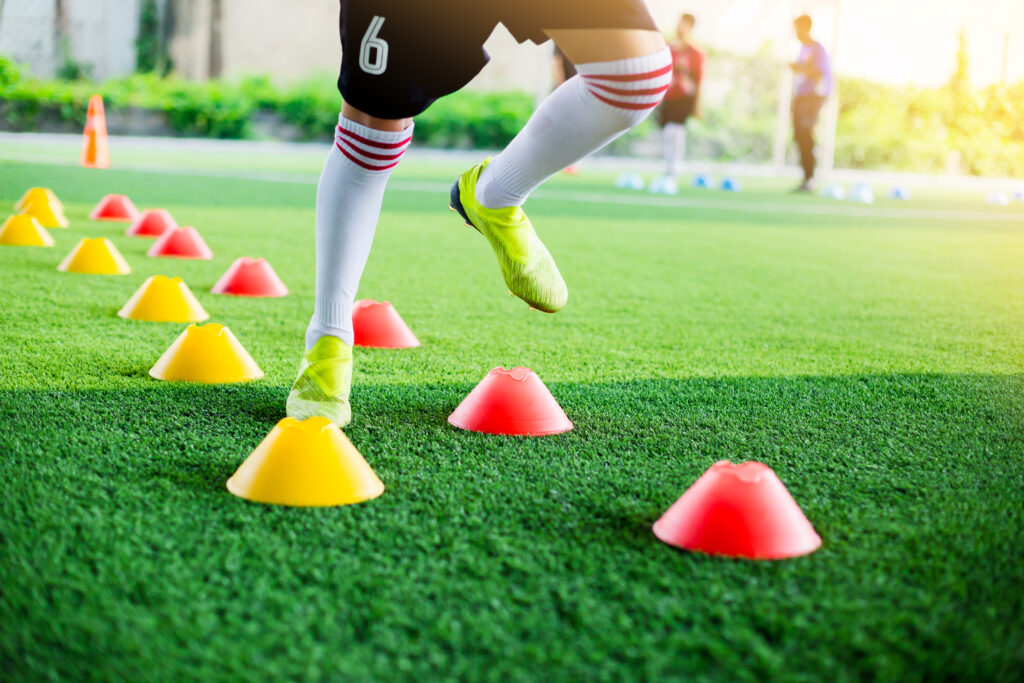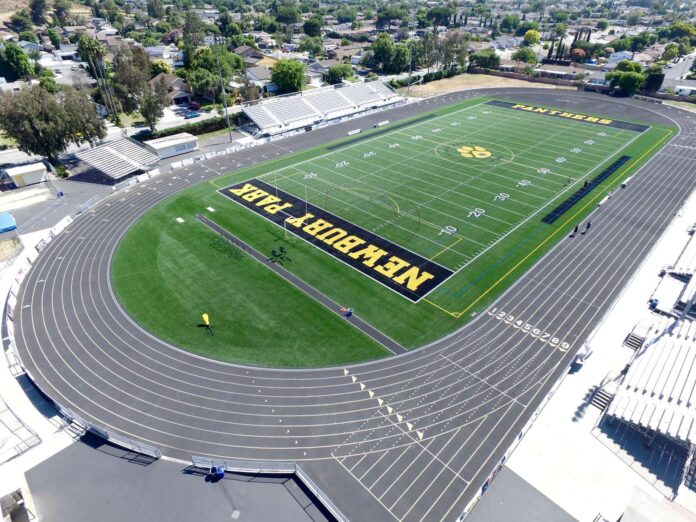Artificial turf, used often on sports fields and front lawns, became a go-to solution for many homeowners and schools during California’s incessant “droughts.” But now that California has record-level snowpack and brimming water reservoirs, does artificial grass remain the future of landscaping?
And what about the controversies surrounding the stuff in other cities and sports franchises? Some U.S. cities and professional sports organizations are saying no to synthetic grass and going back to nature, citing numerous health-related reasons.
Boston banned the use of artificial turf in new city parks last fall, citing dangerous PFAS compounds used in the production of synthetic grass. The U.S. Environmental Protection Agency (EPA) defines PFAS as “long lasting chemicals, components of which break down very slowly over time.” The EPA also says, “Scientific studies have shown that exposure to some PFAS in the environment may be linked to harmful health effects in humans and animals.”
The Conejo Recreation and Park District ‘made a decision not to install any [artificial turf] on our parks’ due to cost and maintenance issues.
In support of the move, environmental health professor for the Icahn School of Medicine at Mount Sinai, Sarah Evans, told The Guardian newspaper, “We already know there are toxic chemicals in the products, so why would we continue to utilize them and have children roll around on them when we have a safe alternative, which is natural grass?”
Earlier this year, a potential link between artificial turf and cancer was reported after six former Philadelphia Phillies baseball players were found to all have died in their 40s and 50s from glioblastoma. The athletes all played at Veterans Stadium, which featured artificial turf.
Kyla Bennett, formerly with the EPA and now with Public Employees for Environmental Responsibility, told The Guardian in March 2023, “There is a high number of Philadelphia Phillies diagnosed with this rare cancer, and it looks weird, so that should be a red flag. We don’t know what those chemicals are doing to us – what happened to exercising caution when we’re talking about human health?”

According to the Philadelphia Inquirer, which broke the story, “Just five of Major League Baseball’s 30 teams play on artificial turf; 14 of the NFL’s 30 stadiums have it. FIFA, professional soccer’s governing body, insists on natural grass fields for World Cup matches.”
In April 2023, the NFL Players Association released data showing the rate of noncontact injuries for its players during the 2022 regular season was higher on artificial turf (.048 per 100) than natural grass (.035 per 100).
Last summer, the city of Millbrae in northern California banned the use of artificial turf on city property until at least this fall, giving it time to research and reconsider its use. Millbrae city manager Tom Williams told The Daily Journal that the city was primarily concerned that artificial turf prevents rainwater from being absorbed by the earth and replenishing critical groundwater supplies. Valuable water instead rushes off into the street drains.
The Millbrae ban is limited to city parks, but the council is said to be considering the widespread use of artificial fields at the local high schools.
The Local Turf Scene
So, how about the Conejo Valley?
The Conejo Valley Unified School District installed artificial turf fields at each of its three high schools. The district declined to comment on the growing body of research on the health risks to athletes. Public records show that in the 2022-23 school year alone, CVUSD spent $100,000 on turf installations, maintenance and repairs. For instance, it spent $42,025 for artificial turf at Newbury Park High School, $19,471 to repair vandalism done to Westlake High School’s artificial field, and paid $20,850 for a new turf installation earlier this year at Sycamore Canyon School, a K-8 campus in Newbury Park.
As for the City of Thousand Oaks, Helen Cox, sustainability division manager, told The Conejo Guardian, “The city does not utilize artificial turf at any of its locations.” In fact, the city lists several “concerns” about artificial turf on its sustainability website:
- “Artificial turf can become significantly hotter, and remain hotter longer than natural grass lawns. This is due to the rubber and plastic compounds it’s made of. For example, on hot summer days, artificial turf can reach temperatures of 160 degrees.
- “Runoff from ‘turf’ during heavy rains can contain pollutants like heavy metals and chemicals that can contaminate surface and groundwater sources. The rubber in some artificial turfs [has] been found to contain other toxic materials like carcinogens, latex and other rubbers that can cause allergic reactions, and phthalates.
- “Artificial turf does not support a healthy soil, which is important in filtering pollutants, increasing water quality and moisture holding ability, and supporting healthy microbes and insects.
- “Artificial turf kills all living organisms in the soil. Therefore, natural plants and grasses won’t be able to survive in that area again without extensive remediation.
- “It is expensive to dispose of artificial turf at landfills.
“Though less than a traditional lawn, it still uses water. Water and chemicals are occasionally required to clean the turf. Water is also sometimes necessary to cool the area before it can be used.”
“Artificial turf does not support any wildlife, including burrowing insects, worms and birds.”
Helen Cox, City of Thousand Oaks
In response to a question about wildlife concerns, Cox replied, “Artificial turf does not support any wildlife including burrowing insects, worms and birds. We do not have any data on its impact on squirrels, rabbits, lizards, birds etc. except to say that artificial turf blocks access to the soil beneath and therefore blocks access to any organisms (such as insects or worms) that might live otherwise in the soil and be a food source for creatures. It also does not allow for seed production or flora that might otherwise be a food source for birds.”
For its part, the Conejo Recreation and Park District “made a decision not to install any [artificial turf] on our parks” due to cost and maintenance issues, Matt Kouba, park superintendent, told The Conejo Guardian.
“We did a lot of research years ago on artificial turf and determined that the initial cost and replacement after 7-10 years did not pencil out financially,” Kouba wrote in an email response. “Ongoing maintenance is also very expensive, the fields need to be brushed and fluffed on a regular basis depending on use, sometimes multiple times a week. They hold dirt and if any organic material gets on them, it does not decompose (soda, dog poop, sunflower seeds).”
CRPD does maintain one turf installation at the Ant Hill at Thousand Oaks Community Park on Moorpark Road. It’s a popular hill kids slide down on cardboard boxes.
Share your experience with or thoughts on artificial turf at [email protected].

